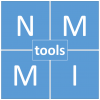The Quantitative Diagnostic Software Group (QUAD) of the Department of Medicine at Cedars-Sinai, USA, seeks to develop software to allow computers to process and analyze three-dimensional images of the heart in much the same way as an experienced human operator. This suite of software tools applies artificial intelligence techniques to the measurement of parameters critical to understanding the state and behavior of the human heart. They can perform a totally automated, push-button sequence of actions relating to imaging processing and analysis. This automated approach allows information to be obtained very quickly that is quantitatively accurate and does not suffer from intra-observer or inter-observer variability. are widely considered to represent the gold standard in nuclear cardiology.
The QUAD software tools, often referred to as the Cedars-Sinai Cardiac Suite of Applications, formerly known as Cedars-Sinai’s Artificial Intelligence in Medicine (CS-AIM) software suite, are widely considered to represent the gold standard in nuclear cardiology and are licensed and distributed by various nuclear medicine camera manufacturers and software companies acknowledged in QUAD’s website.
Through QUAD, algorithms have been developed to:
- Take raw digital data output by the gamma camera, identify where the heart is, reconstruct it into tomographic images and reorient those images to make them perpendicular to the heart’s axis—all without operator interaction.
- Take tomographic images of the heart, evaluate the signals from several hundred portions of the myocardium, compare the strength of the signals with those expected in a normal heart and generate an exact quantitative measurement of the location, extent and severity of perfusion abnormalities of the heart. This gives the physician objective information to help select or rule out more invasive treatment.
- Analyze the dynamic functioning of the heart (i.e., the way it contracts and thickens during its cycle). A dynamic measurement of the heart cavity volume is performed from electrocardiographically gated three-dimensional nuclear cardiology images by automatically identifying the endocardial and epicardial surfaces and following their motion throughout the cardiac cycle.
Suite of QUAD software projects (available on MS Windows, Mac OS X and various Unix/Linux distributions):
-
- AutoQUANT / AutoQUANT MD
This fully automated program integrates in one package the functionalities of AIM’s QGS and QPS . AutoQUANT MD contains a full version of AutoQUANT as well as CSimport. AutoQUANT and AutoQUANT MD are available exclusively from Philips Medical Systems. - AutoSPECT
Cedars-Sinai‘s application for automatic reconstruction and reorientation of raw tomographic data (raw projections), with an emphasis on cardiac images. - CSimport
CSimport is a data management utility that also serves as launcher for software applications that are part of the Cedars-Sinai Cardiac Suite. - Motion Correction (MoCo)
This application provides automatic and manual correction of SPECT acquisition artifacts. - Quantitative Blood Pool SPECT (QBS)
This application provides automatic quantitation of left- and right-ventricular function (ejection fraction, ED and ES volumes, stroke volumes) using gated blood pool SPECT images. It also displays motion polar maps and parametric surfaces. - Quantitative Gated SPECT (QGS)
This application provides cardiac function quantitation using perfusion datasets: ED and ES volumes, ejection fraction. The image data can be viewed in a variety of modes, from selected slices in a 2D view to a rendered 3D surface of the myocardium with function maps (perfusion, motion, thickening and regional EF). - Quantitative Perfusion SPECT (QPS)
In addition to cardiac parameters, such as chamber volume and wall area, this application provides perfusion analysis of ungated datasets by comparing rest and stress datasets to a database of normal values (also called normal limits) using statistical methods. - Quantitative PET (QPET)
This application provides automatic segmentation, quantification and analysis of static and gated myocardial perfusion PET, with support for both short axis and transverse datasets, and provides the calculation of Coronary Flow Reserve (CFR) and Myocardial Blood Flow (MBF) - CsDcmDmp (currently only on MS Windows)
This application is a public-domain utility designed to view DICOM header information. The program conforms to the Windows MDI (multi-document interface) and accepts any valid DICOM file. It offers limited search capabilities, as well as printing. This program is provided without any kind of warranty. - Automated Report Generators
The Cedars-Sinai reporting system is a complete reporting package for nuclear cardiologists. The reporting system, designed to quickly produce high quality, error-free reports, is divided into 2 main components: Automated Report Generator (ARG) and QARG extended version. - Fusion/CT (optional)
This module is an optional, add-on feature to QGS,QPS and QPET that utilizes the 3D coronary artery tree representation of the vendor’s CT Angiography (CTA) software to provide a fused display of the coronary tree and the 3D LV surfaces with mapped perfusion or viability information. Fused review of original SPECT/PET, CT, and CTA transverse slices in three orthogonal planes is supported. Interactive 3D alignment correction of SPECT/PET, CT and CTA is possible. - PlusPack (optional)
This module is an optional, add-on feature to QGS and QPS featuring prone/supine imaging, stress-rest image registration, evaluation of serial image changes, “motion-frozen” perfusion or viability imaging by warping ECG-gated images to the end-diastolic position, access to phase information for gated QGS datasets, shape index extraction and saving of results and application configurations for case studies in a PowerPoint slide format. - QGS Companion (optional)
This module is a collection of enhancements to QGS featuring diastolic function assessment, 17-segment scoring for perfusion and function evaluation and eccentricity index measurement. - QPS Companion (optional)
This module is a collection of enhancements to QPS featuring 17-segment scoring for perfusion and function evaluation and eccentricity index measurement.
- AutoQUANT / AutoQUANT MD
Official Website, Secondary Website


